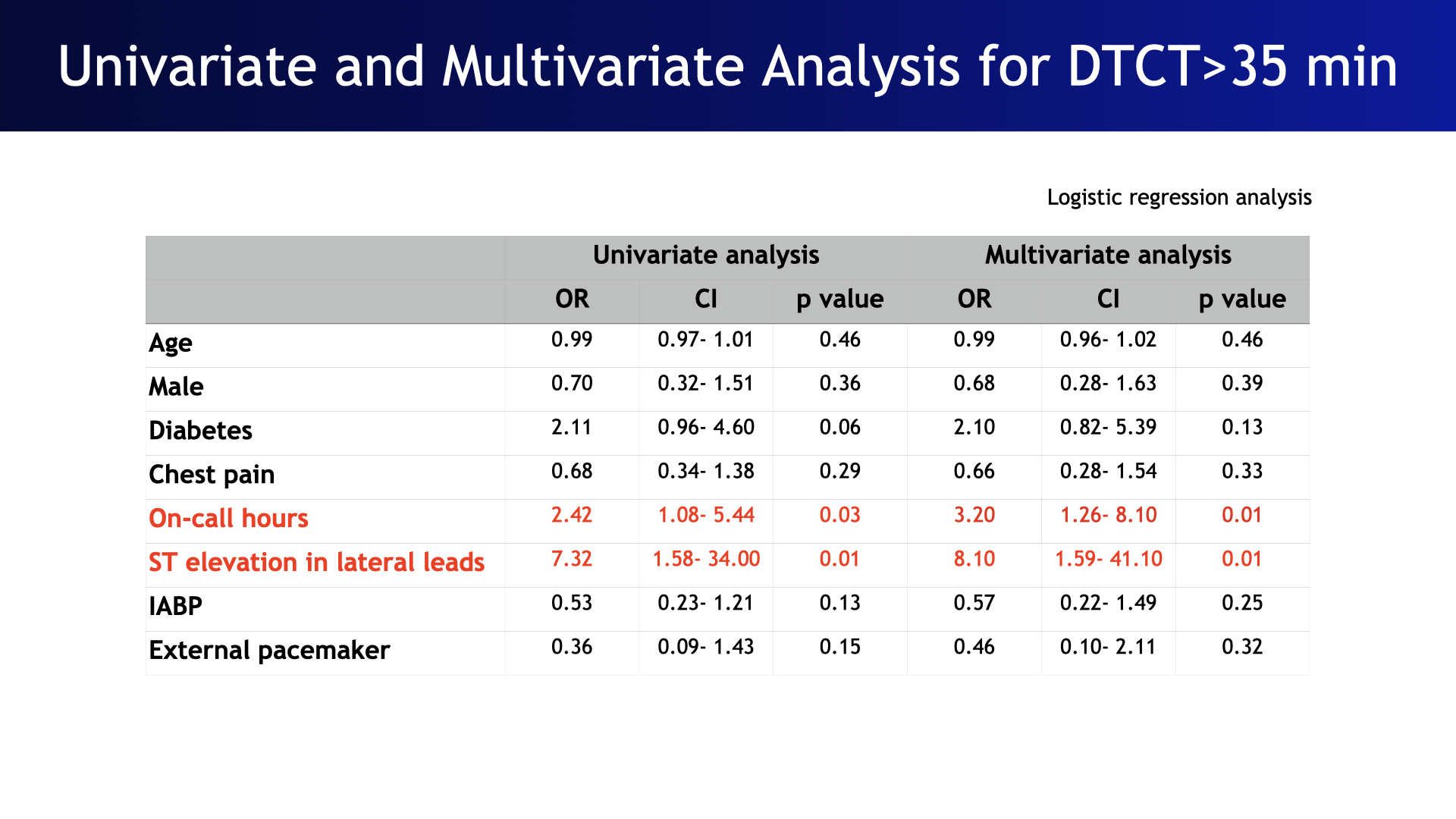Lots of interesting abstracts and cases were submitted for TCTAP 2024. Below are the accepted ones after a thorough review by our official reviewers. Don’t miss the opportunity to expand your knowledge and interact with authors as well as virtual participants by sharing your opinion in the comment section!
TCTAP A-012
Factors Influencing Door-to-Catheter Room Time Delay in Patients With ST-Elevation Myocardial Infarction Undergoing Primary Percutaneous Coronary Intervention
By Nao Yasuda, Takuma Tsuda
Presenter
Nao Yasuda
Authors
Nao Yasuda1, Takuma Tsuda1
Affiliation
Nagoya Ekisaikai Hospital, Japan1
View Study Report
TCTAP A-012
ACS/AMI
Factors Influencing Door-to-Catheter Room Time Delay in Patients With ST-Elevation Myocardial Infarction Undergoing Primary Percutaneous Coronary Intervention
Nao Yasuda1, Takuma Tsuda1
Nagoya Ekisaikai Hospital, Japan1
Background
In primary percutaneous coronary intervention (PCI) for ST-elevation myocardial infarction (STEMI), shorter door-to-balloon time (DTBT) has been associated with better clinical outcomes. Reducing the delay in door-to-cath lab time (DTCT) is critical for reducing DTBT. We assessed the predictor for DTCT delay in emergency catheterization for STEMI.
Methods
We retrospectively analyzed 145 cases, who received primary PCI for STEMI at our hospital from September 2021 to December 2022. Patients were divided into two groups (short group and long group) by the median DTCT. The evaluated predictors included chest pain, day or on-call hours, cardiologist standby, STEMI lead location, respiratory support use, and need for hemodynamic support. The rate of DTBT under 90 minutes was also compared between two groups. Transferred patients and ECPR cases with V-A ECMO were excluded from the analysis.
Results
The median DTCT was 35 minutes, with 71 patients in the long group and 74 in the short group. The univariate logistic regression analysis showed on-call hours (OR: 2.42; 95% CI: 1.08-5.44; p=0.03) and ST elevation in lateral leads (OR: 7.32; 95% CI: 1.58-34.0; p=0.01) as significant predictors for long DTCT. These two factors remained significant in the multivariate analysis (on-call: OR: 3.20; 95%CI: 1.26-8.10; p=0.02, lateral leads: OR: 8.10; 95%CI: 1.59-41.10; p=0.01). DTBT within 90 minutes was achieved in 98.6% of the short group versus only 59.4% of the long group (p<0.01).


Conclusion
On-call hours and lateral STEMI were indicated as significant predictors associated with long DTCT. Synthesized 18-lead ECG could be helpful for minimizing these delay.

